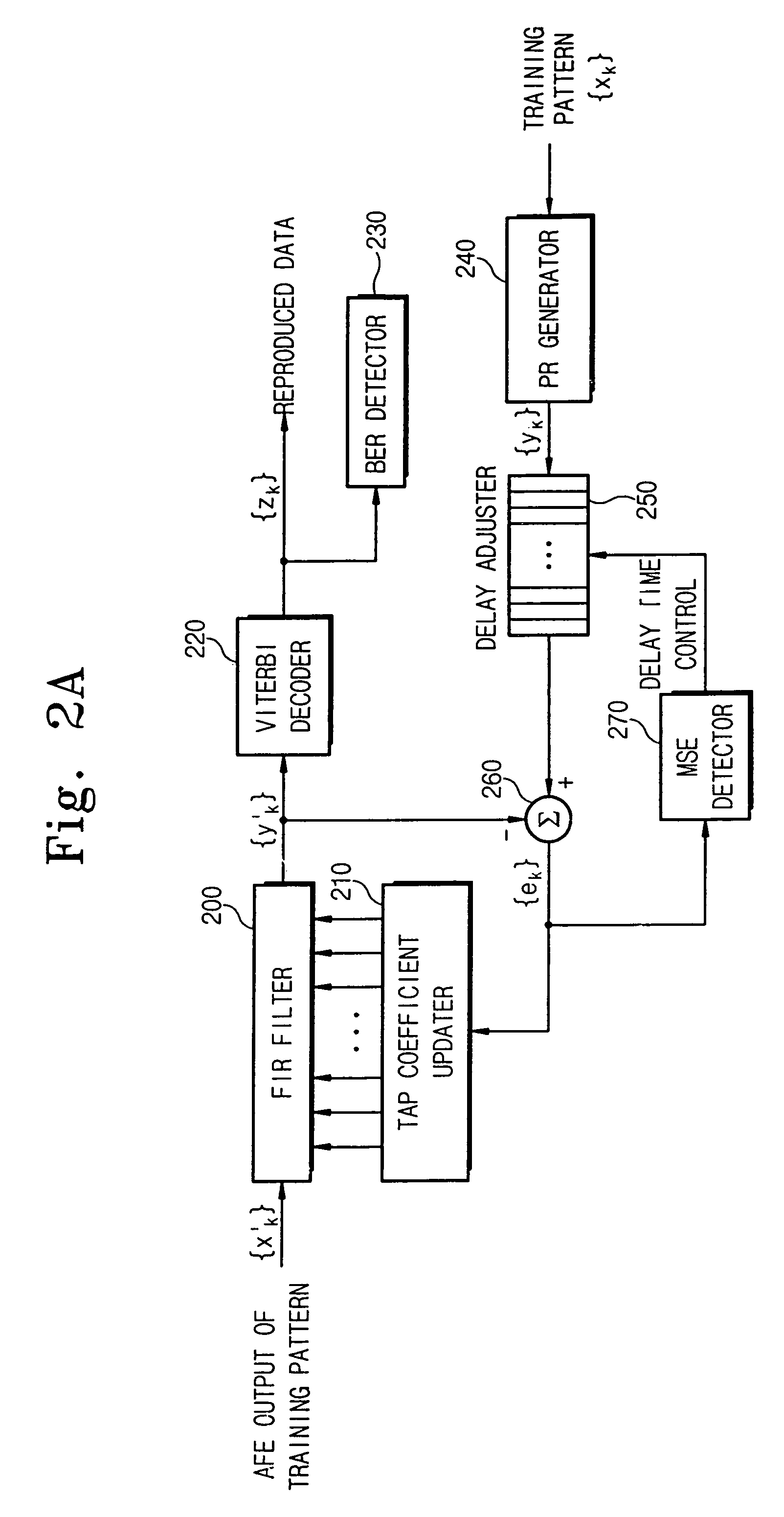Apparatus and method for setting tap coefficient of adaptive equalizer
a technology of adaptive equalizer and tap coefficient, applied in the field of equalizers, can solve problems such as system instability, initial value setting method may not show optimal bit error rate performance, and data distorted containing inter-symbolic interference (isi) obtained, so as to improve efficiency and stable data reproduction
- Summary
- Abstract
- Description
- Claims
- Application Information
AI Technical Summary
Benefits of technology
Problems solved by technology
Method used
Image
Examples
Embodiment Construction
[0024]Reference will now be made in detail to the preferred embodiments of the present invention, examples of which are illustrated in the accompanying drawings. It shall be understood that the present invention is not limited to the embodiments illustrated herein after, and the embodiments are rather introduced to promote easy and complete understanding of the scope and spirit of the present invention.
[0025]FIG. 2A is a block diagram illustrating an apparatus and method for initializing a tap coefficient of an adaptive equalizer according to an embodiment of the present disclosure. Referring to FIG. 2A, the tap coefficient initializing apparatus includes an FIR filter 200, a tap coefficient updater 210, a Viterbi decoder 220, a BER detector 230, a partial response (PR) generator 240, a delay adjuster 250, a level error detector, and a mean square error (MSE) detector 270. The delay adjuster 250 and the MSE detector 270 adjust a delay occurring while an AFE output signal {x′k} of a ...
PUM
 Login to View More
Login to View More Abstract
Description
Claims
Application Information
 Login to View More
Login to View More - R&D
- Intellectual Property
- Life Sciences
- Materials
- Tech Scout
- Unparalleled Data Quality
- Higher Quality Content
- 60% Fewer Hallucinations
Browse by: Latest US Patents, China's latest patents, Technical Efficacy Thesaurus, Application Domain, Technology Topic, Popular Technical Reports.
© 2025 PatSnap. All rights reserved.Legal|Privacy policy|Modern Slavery Act Transparency Statement|Sitemap|About US| Contact US: help@patsnap.com



